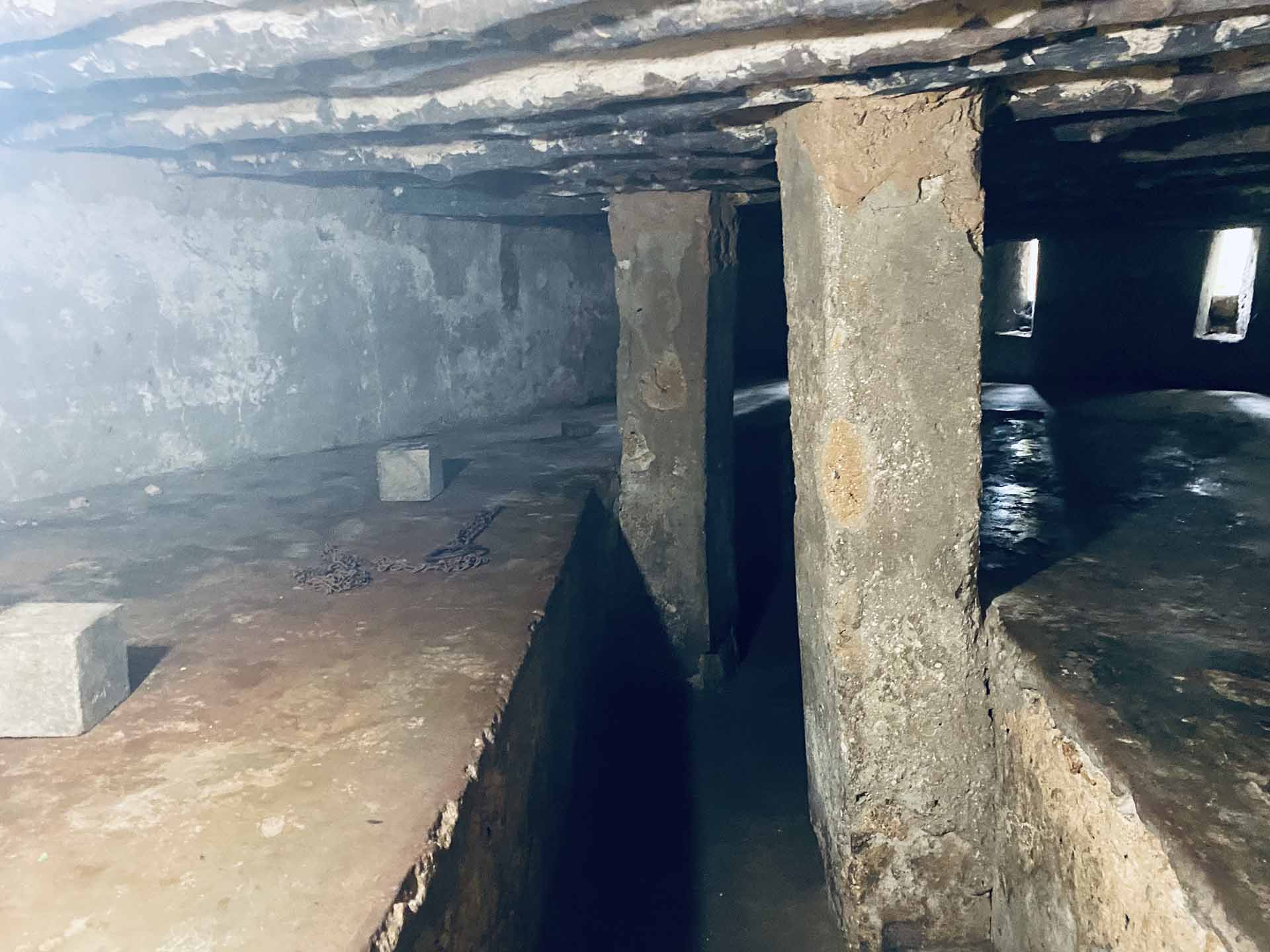Cypriani Asmani is only six years old when he tries to escape slavery. He runs away, but gets caught. As a punishment, he is chained to a 30-pound log. For an entire year, the only way he can move about is by carrying the wooden weight on his head.
East Africa Slave Trade Exhibition
We are visiting the East Africa Slave Trade Exhibition in Stone Town. Following a visit to the adjacent Anglican Church that was built on the remainders of the slave trade, we learn more about the functioning of Zanzibar as the commercial hub here. In the nineteenth century, the city was teeming with slaves and traders. The Sultan of Zanzibar had many slave traders under contract. They were obliged to offer the enslaved on the market in Stone Town and to pay taxes on the transactions. Both the Sultan and many people in various sectors of society profited from this profusely. The economy, businesses, and trade flourished.
The museum is filled to the brim with testimonies, eyewitness reports, personal stories, and pictures. The exhibit honors the memory of those who were traded and sold there. Different pillars with information take the visitor along on a trip starting with the rise of slavery, the disastrous effects, economic gains, and finally abolition and the issues this entailed.
Not enough oxygen
We set foot in the dungeons where the slaves were kept before and after auction. The term ‘kept’ is not chosen at random, but deliberate, because circumstances are truly abysmal. A lightbulb hangs off the ceiling now, but back in the days it was pitch-dark. An air vent was created especially for the visitors. “Otherwise, not enough oxygen reaches here,” says our guide Mohammed. “Many died here due to a lack of oxygen.” It leaves little to the imagination to capture what it must have been like for the slaves. If it wasn’t a lack of oxygen, malnutrition or one of the many diseases would have meant the end.
As many as 75 women and children were locked up in this stifling room. The area is divided by a small chamber for the overseer, and next to it a smaller area where the men stayed. This is how they wanted to prevent rape – though, most likely, mainly any possible collateral effects. The prisoners were barely able to stand. At the center of the area runs a multi-functional trench, where you could stretch your legs, wash, and relieve yourself. When the tide was high, the water from the mangrove – that has since been drained – would creep into the dungeon. At low tide, the filthy water would flow out again.
Article continues below.

Horrors
There were seventeen of these dungeons in total. But the dungeon is merely a snapshot of the suffering borne by the slaves. At the museum, we learn about the absolute horrors on the voyage from and to Zanzibar. Some of the slave traders travelled in convoys all the way from Congo. This meant walking for days on end for their prisoners, tied with heavy chains on their ankle, arm, and neck, generally without food or water. By latching a tree trunk to the neck of the men, the traders prevented them from running away. “We faced death every day,” writes an eyewitness in A Pamphlet on the Slave Trade at East Africa, published by the Church Missionary Society in 1868: “People were killed by the stick, by the dagger, and I saw with my own eyes how six men were strangled to death. (…) A newborn was torn away from his mother’s breast and tossed in the bushes crying.”
David Livingstone
It was David Livingstone, the explorer who was searching for the source of the Nile, who saw these atrocities and demanded change. He initiated a movement that eventually led to the abolition of slavery on 5 June 1883. But matters did not end there. Some traders continued underground and for the liberated slaves it remained difficult to make ends meet in many cases. They would work for a pittance. Some of the British were simply afraid of the economic impact if they were to lose their cheap labor.
Lives were disrupted and destroyed in a brutal manner. So many communities, with all their rich cultures and histories, eliminated. So much suffering, a relatively short while ago. It is all the more painful that the museum concludes with a shocking analysis. There are more slaves today than throughout the entire period of African slave trade. As much as 61 percent thereof is concentrated in five countries: India, China, Pakistan, Uzbekistan, and Russia. Over half of the enslaved is a woman or child.
Modern slavery
We can point our finger, or take a look in the mirror. History is clear: wherever there is demand, supply arrives. This is what we saw happen with the demand for ivory and for cheap workers back then, and with cheap clothing and products now. From the boy in the diamond mines of Congo to the Uzbek girl picking cotton: the Western world remains one of the biggest markets for all sorts of slave labors. It begs the question: how do I contribute myself to such abuse with my wallet and purchases today?
This renders a visit to the East Africa Slave Trade Exhibition not merely an extremely impressive history lesson, but an urgent appeal to our capacity for self-reflection as well.
You will find East Africa Slave Trade Exhibition on Tharia Street, at the Anglican Church, in Stone Town. The exhibition is opened daily from 8:30 am until 6:00 pm.

Recent Comments